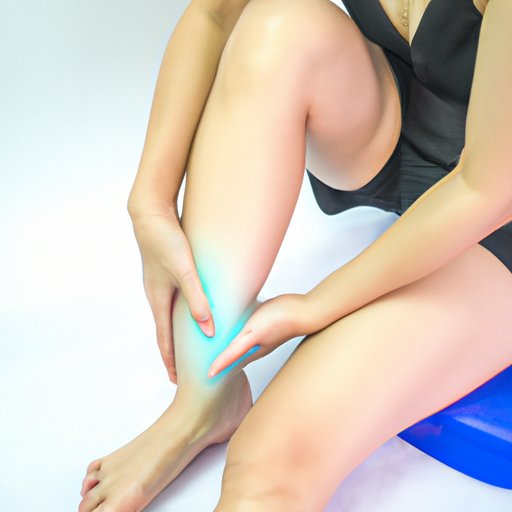
I. Introduction
Growing pains are a common phenomenon among children, typically occurring in the legs. They are characterized by throbbing or aching pain in the muscles, usually in the evenings or at night. Although the exact cause of growing pains is unknown, they are believed to be related to the rapid growth of bones.
Growing pains, while not serious or life-threatening, can be uncomfortable and interfere with quality sleep and daily activities. Fortunately, several solutions can help manage growing pains effectively. This article explores some of the most effective solutions for relieving growing pains in legs.
II. Stretch before bed
Tight muscles and tension in the legs can trigger growing pains, making stretching an effective solution for relief. Gentle leg stretching before bedtime can alleviate the pain and promote relaxation.
Simple stretches such as hamstring stretches, calf stretches, and quad stretches can work wonders in relieving growing pains. Hold each stretch for 10-15 seconds and repeat several times before bedtime.
Regular stretching before bed can also improve blood circulation, enhancing muscle recovery and reducing cramping.
III. Apply heat or cold
Heat or cold therapy can provide immediate relief for growing pains in legs. Applying heat or cold to the affected area can reduce pain and inflammation and promote relaxation.
Use a heat pad or warm towel to apply heat to the affected area or use a cold compress to reduce swelling and inflammation. It is advisable to alternate between heat and cold, resting for 15-20 minutes between each application.
Ensure not to use hot or cold therapy for extended periods and follow safety precautions when using them.
IV. Practice gentle massage
Massage therapy can ease muscle tension, relieve pain, and improve relaxation, making it an excellent solution for growing pains. Massage the affected areas gently, using circular motions and applying pressure as necessary.
Regular massage can help enhance blood flow and reduce stiffness, thereby preventing growing pains.
It is important to apply massage gently and avoid over-stimulating the muscles, which can lead to more pain.
V. Move frequently
Staying active and moving frequently can help prevent growing pains in legs. A sedentary lifestyle can lead to muscle stiffness and tension, triggering growing pains.
Incorporate more movement into your daily routine, such as walking, cycling, or swimming. Take breaks from prolonged standing or sitting to stretch and move around.
Regular movement can help improve muscle strength and flexibility, reducing the likelihood of growing pains in the long run.
VI. Take over-the-counter pain medication
Over-the-counter pain medication may be necessary if the growing pain is persistent or severe. Ibuprofen and acetaminophen are common medications used for pain relief and reducing inflammation.
However, it is crucial to follow the recommended dosage and consult a healthcare professional before taking any medication. Overuse or misuse of medication can lead to adverse side effects and worsen growing pains.
VII. Exercise regularly
Regular exercise is an effective solution for preventing growing pains in legs. Strengthening the leg muscles can help improve flexibility, reducing the chances of developing pain.
Engage in activities that target leg muscles, such as cycling, jogging, or strength training. Stretch after each workout to improve muscle recovery and prevent stiffness.
Consistent exercise can also promote better sleep quality, reducing the chances of developing growing pains during the night.
VIII. Conclusion
Growing pains in legs can be managed effectively through various solutions such as stretching, massage, heat and cold therapy, frequent movement, exercise, and pain medication. It is crucial to adopt a comprehensive approach to prevent and manage growing pains.
It is important to consult a doctor if the pain persists or gets worse, especially if accompanied by other symptoms.
Implementing the solutions discussed above can help improve leg health, reduce pain, and promote overall well-being.





